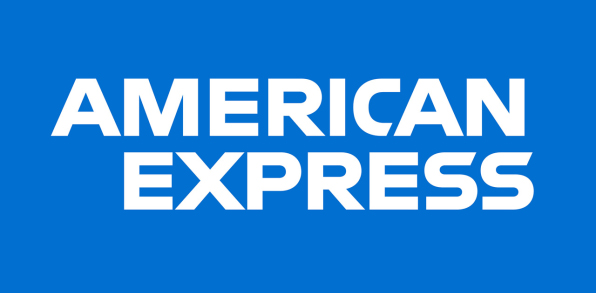Protecting your websites is a breeze using Cloudflare and similar CDN networks. Like ModSecurity, these systems hide your server’s IP address and offer real-time request filtering to protect it from direct assaults. Content delivery networks (CDNs) collect data on various attack types, process massive amounts of traffic, and then better secure websites according to specific patterns.
In this blog, we will explore the types of operating systems, their features, and how businesses use them to meet their diverse needs.
What is an operating system?
An operating system (OS) regulates all other computer application programs after being installed by a startup program. The application programs access the OS using a predetermined application program interface (API) by requesting services.
Users may also engage with the OS through a user interface (UI), which may include a graphical user interface (GUI) or a command-line interface (CLI).
How does an operating system work?
Operating systems benefit software development and computer applications. Without an OS, every application would need its UI and comprehensive code to handle all low-level functionality of the computer’s system software, such as disk storage and network interfaces. Given the variety of underlying hardware and the quantity of system software routines needed to enable computer tasks, this would bloat every program and make software development unfeasible.
The OS handles numerous system-level software functions, such as transmitting a network packet or displaying text on a display. System software connects applications to computer and hardware operations. Applications can communicate with hardware and other system-level operations without knowing the details through the OS.
The OS and its system software can support practically unlimited apps if each program uses the same resources and services. The OS dramatically minimizes the time and code needed to design and debug an application and lets users control, configure, and manage system software and hardware through a standard OS interface.
Types of Operating Systems
Operating systems are classified into several types based on design, functionality, and use cases. Here are the primary types:
Batch Operating System
This form of operating system does not require direct interaction with the computer. An operator is responsible for grouping comparable tasks with identical specifications into batches. The operative is accountable for organizing tasks that share similar requirements. The Batch Operating System is intended to efficiently manage and execute many tasks by grouping them.
Distributed Operating System
These operating systems are a recent development in computer technology and are rapidly gaining widespread acceptance worldwide. A shared communication network facilitates communication among various autonomous, interconnected computers. The memory unit and CPU of independent systems are distinct.
These systems are referred to as distributed systems or loosely coupled systems. Their processors exhibit variations in size and functionality. The primary advantage of utilizing these operating systems is that it is always feasible for a single user to access files or software not installed on their system. However, remote access is enabled on a different system within the network connected to the devices.
Network Operating System
These systems can handle data, users, groups, security, applications, and other networking services. They are operated on a server and can implement these functions. These OSs, over a small private network, enable users to share access to various networking capabilities, including files, printers, security, applications, and other networking functions.
In addition, one more significant feature of Network Operating Systems is that all users are well aware of the underlying setup of all other users inside the network, their unique connections, and so on. That’s why these computers are sometimes referred to as closely connected systems.
Real-time Operating System
Device manufacturers often choose a real-time operating system (RTOS) when their computer devices must interface with the physical environment under consistent and predictable time limits.
For instance, an industrial control system may control a large power plant or manufacturing facility. The vast array of sensors at such a facility generates signals, which are transmitted to control various components such as valves, actuators, motors, and more.
Disaster may ensue if the industrial control system does not react promptly and predictably to changing real-world conditions. While buffering, processing latencies, and other delays are acceptable in conventional OSs, they must not be present in an RTOS. FreeRTOS and Wind River VxWorks are two instances of RTOSes.
Mobile Operating System
Mobile operating systems like tablets and smartphones are intended for communication and mobile computation devices. The operating system must be reduced in size and complexity to mitigate resource consumption while ensuring that one or more applications running on the device have sufficient resources. It’s because mobile devices typically offer limited computing resources compared to traditional PCs.
Effective speed, user responsiveness, and careful attention to data processing tasks—like enabling media streaming—are frequently emphasized by mobile operating systems. Android and Apple iOS are examples of mobile operating systems.
Common operating systems
Here are the most common operating systems in use:
Microsoft Windows
Microsoft Windows, developed by Microsoft, is among the most widely used proprietary computer operating systems worldwide. Most personal computers arrive with a version of Microsoft Windows already installed. One of the operating system’s drawbacks is its compatibility with mobile phones.
Windows 11 Pro for Business is a premium desktop operating system tailored for professionals and businesses. Released as part of Microsoft’s latest generation of Windows, it combines modern aesthetics with robust functionality.
Apple iOS
Apple’s mobile operating system, iOS, is utilized on iPads and smartphones produced by the same corporation. Individuals who utilize this system have access to a large number of apps. The operating system provides strong encryption capabilities to safeguard users’ private information and prevent unwanted access.
Google Android
One of the world’s most widely used OS is Android, developed by Google. Tablets and cell phones are the most common places to find them. In addition, it is compatible with devices manufactured by other companies. The Google Play Store presents users with various mobile applications they can download.
Apple macOS
Known as macOS (formerly known as OS X), this proprietary operating system was developed by Apple and is installed on all of the personal computers and desktops manufactured by Apple. The most recent version of macOS is pre-installed on every hardware manufactured by Apple and Macintosh. Its well-known ability to reduce the number of bugs and
Linux
Linus Torvalds, a Finnish programmer, is credited with creating Linux. It is being developed collaboratively by programmers worldwide who submit updates to the central kernel software.
Choosing the Right Operating System for Your Business
Selecting which OS depends primarily on industry factors, budget size, and how it accommodates explicit needs, as outlined herein:
- Cost: Linux-based systems are usually less expensive than proprietary solutions such as Windows or macOS.
- Security: Businesses handling sensitive data may prioritize OS with robust security features.
- Compatibility: Ensure the OS supports the software and hardware your business relies on.
- Scalability: Choose an OS that can grow with your business needs, especially if you plan to expand into cloud or IoT technologies.
Final Thoughts
The operating systems are central to the operation of businesses. From productivity to security, operating systems affect every other aspect. It calls for the need to know the various types and applications.
Windows 11 Pro is a very versatile and secure business option with features that suit modern workplace needs.
By selecting the right OS for your organization, you can optimize workflows, enhance collaboration, and secure your digital assets—ensuring a competitive edge in today’s fast-paced business environment.
For more details, you can visit us here at the Softvire Global Market and check some information about the operating system. We also offer Windows 11 Pro for Business at an affordable price!



